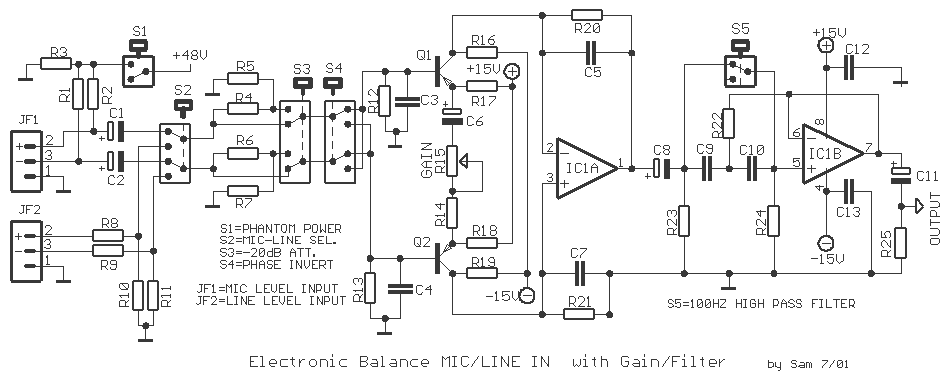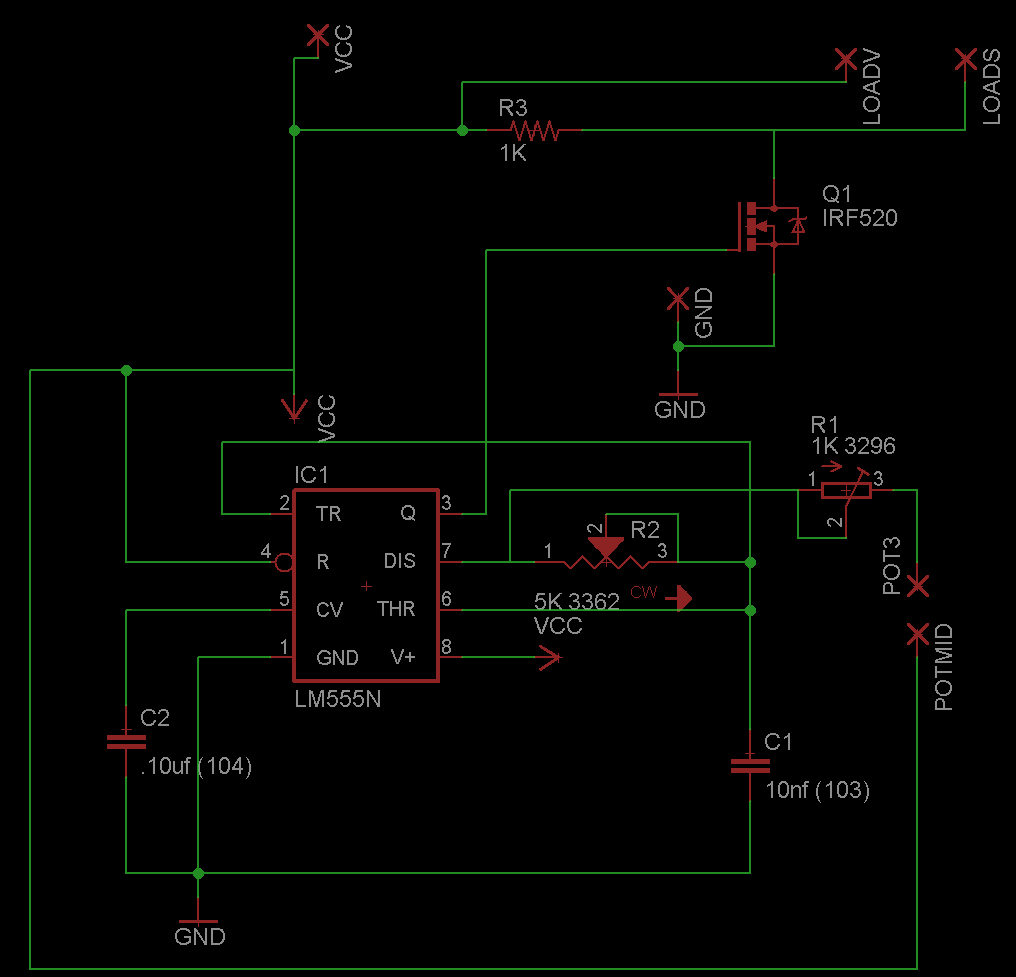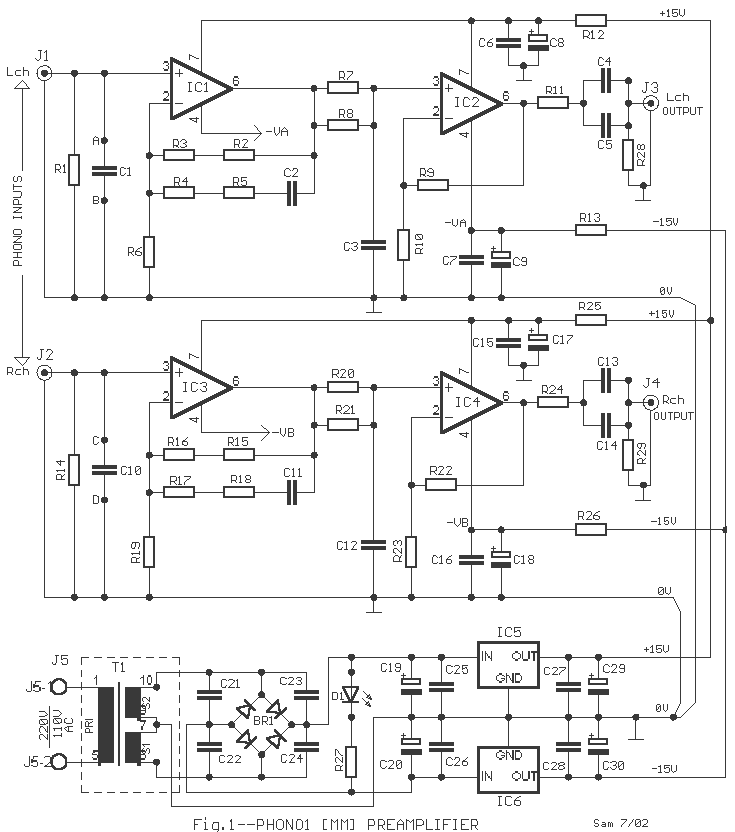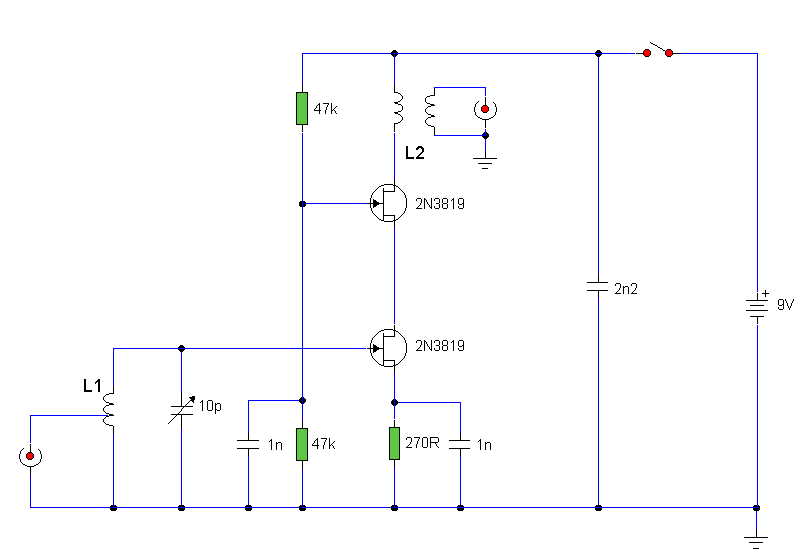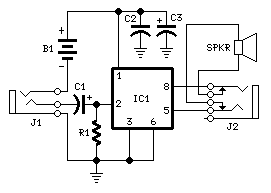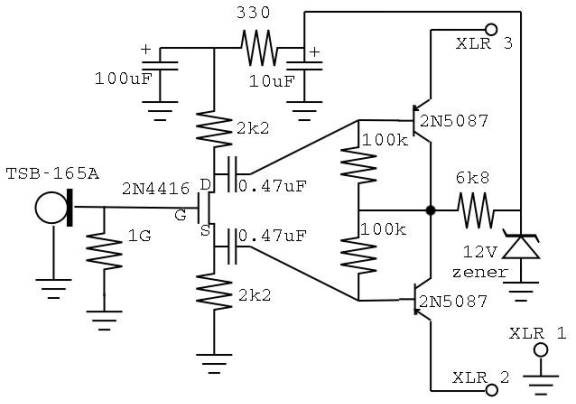
Portable Microphone Preamplifier

This circuit is mainly intended to provide common home stereo amplifiers with a microphone input. The battery supply is a good compromise: in this manner the input circuit is free from mains low frequency hum pick-up and connection to the amplifier is more simple, due to the absence of mains cable and power supply. The circuit is based on a low noise, high gain two stage PNP and NPN transistor amplifier, using DC negative feedback through R6 to stabilize the working conditions quite precisely.
Additional Content: The circuit's primary function is to equip conventional home stereo amplifiers with a microphone input. It achieves this by utilizing a battery supply, which offers a number of advantages. Firstly, it isolates the input circuit from mains low frequency hum pick-up, a common issue that can degrade audio quality. Secondly, it simplifies the connection to the amplifier by eliminating the need for a mains cable and power supply.
The heart of the circuit is a low noise, high gain two-stage amplifier, constructed with both PNP and NPN transistors. This dual transistor configuration ensures a broad range of operational frequencies, enhancing the circuit's versatility. The PNP and NPN transistor amplifier stages work in tandem to amplify the microphone signal before it is sent to the stereo.
The circuit also employs DC negative feedback through resistor R6. This feedback loop stabilizes the amplifier's operating conditions, ensuring consistent performance and reducing the risk of distortion or other audio anomalies. The stability provided by the DC negative feedback loop is crucial for maintaining the high gain and low noise characteristics of the amplifier, thereby ensuring optimal audio quality.
In conclusion, this circuit is a well-designed solution for integrating a microphone input into a home stereo amplifier. It employs a battery supply for isolation from mains interference, a two-stage PNP and NPN transistor amplifier for high gain and low noise amplification, and a DC negative feedback loop for operational stability.This circuit is mainly intended to provide common home stereo amplifiers with a microphone input. The battery supply is a good compromise: in this manner the input circuit is free from mains low frequency hum pick-up and connection to the amplifier is more simple, due to the absence of mains cable and power supply. The circuit is based on a low noise, high gain two stage PNP and NPN transistor amplifier, using DC negative feedback through R6 to stabilize the working conditions quite precisely.
🔗 External reference
Additional Content: The circuit's primary function is to equip conventional home stereo amplifiers with a microphone input. It achieves this by utilizing a battery supply, which offers a number of advantages. Firstly, it isolates the input circuit from mains low frequency hum pick-up, a common issue that can degrade audio quality. Secondly, it simplifies the connection to the amplifier by eliminating the need for a mains cable and power supply.
The heart of the circuit is a low noise, high gain two-stage amplifier, constructed with both PNP and NPN transistors. This dual transistor configuration ensures a broad range of operational frequencies, enhancing the circuit's versatility. The PNP and NPN transistor amplifier stages work in tandem to amplify the microphone signal before it is sent to the stereo.
The circuit also employs DC negative feedback through resistor R6. This feedback loop stabilizes the amplifier's operating conditions, ensuring consistent performance and reducing the risk of distortion or other audio anomalies. The stability provided by the DC negative feedback loop is crucial for maintaining the high gain and low noise characteristics of the amplifier, thereby ensuring optimal audio quality.
In conclusion, this circuit is a well-designed solution for integrating a microphone input into a home stereo amplifier. It employs a battery supply for isolation from mains interference, a two-stage PNP and NPN transistor amplifier for high gain and low noise amplification, and a DC negative feedback loop for operational stability.This circuit is mainly intended to provide common home stereo amplifiers with a microphone input. The battery supply is a good compromise: in this manner the input circuit is free from mains low frequency hum pick-up and connection to the amplifier is more simple, due to the absence of mains cable and power supply. The circuit is based on a low noise, high gain two stage PNP and NPN transistor amplifier, using DC negative feedback through R6 to stabilize the working conditions quite precisely.
🔗 External reference
